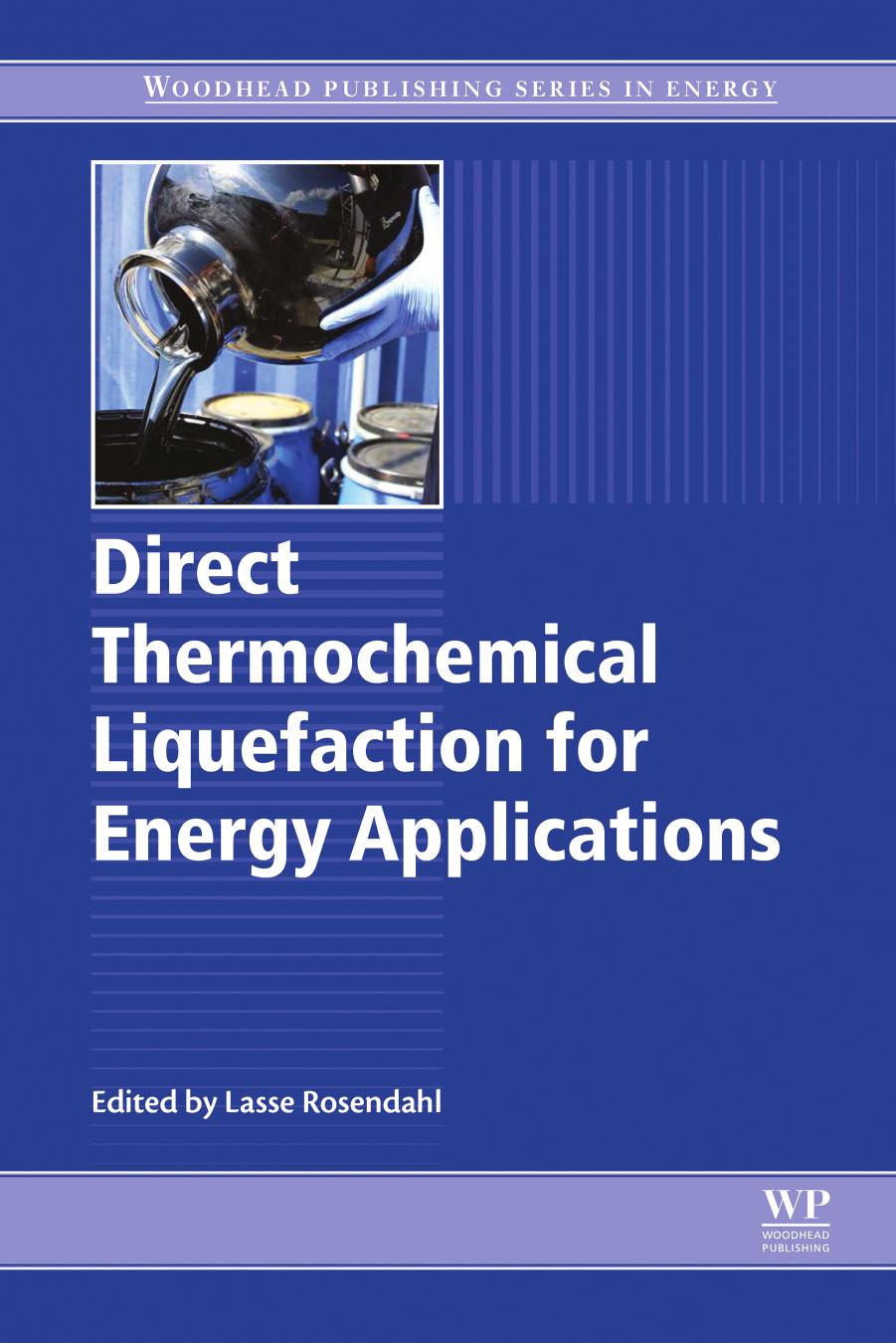Direct Thermochemical Liquefaction for Energy Applications by Lasse Rosendahl

Author:Lasse Rosendahl
Language: eng
Format: epub, pdf
ISBN: 9780081010259
Publisher: Elsevier Ltd.
Published: 2017-11-14T16:00:00+00:00
Further reading
[177] Sheehan J.D., Savage P.E. Products, pathways, and kinetics for the fast hydrothermal liquefaction of soy protein isolate. ACS Sustain Chem Eng. 2016;24:6459–6462.
6
Recipe-based co-HTL of biomass and organic waste
S.S. Toor; L. Rosendahl; I. Sintamarean Aalborg University, Aalborg, Denmark
Abstract
Hydrothermal liquefaction (HTL) has been investigated for several decades as a means to convert a wide range of biomasses and residues efficiently and with high yield into biofuel intermediates. As a wet processing technology, HTL is generally carried out in aqueous media of at least 50%–60% water making it very suitable for most natural biomasses and organic residues (Vardon et al. [1]; Karagöz et al. [2]; Biller and Ross [3]; Anastasakis and Ross [4]). Processed at temperatures around 280–370°C, even up to approximately 400°C, and pressures between 10 and 30 MPa, the original biomass breaks down into a bio-crude phase (typically the main and desired product), an aqueous phase with water-soluble organics, and minor fractions of solid residue and gas. The yield and composition of these products depends not only on reactor type, process conditions, and product workup but also to a very large extent on the biochemical composition of the biomass.
Download
Direct Thermochemical Liquefaction for Energy Applications by Lasse Rosendahl.pdf
This site does not store any files on its server. We only index and link to content provided by other sites. Please contact the content providers to delete copyright contents if any and email us, we'll remove relevant links or contents immediately.
| Alternative & Renewable | Drilling Procedures |
| Electric | Fossil Fuels |
| Mining | Nuclear |
| Power Systems |
Whiskies Galore by Ian Buxton(41940)
Introduction to Aircraft Design (Cambridge Aerospace Series) by John P. Fielding(33093)
Small Unmanned Fixed-wing Aircraft Design by Andrew J. Keane Andras Sobester James P. Scanlan & András Sóbester & James P. Scanlan(32764)
Craft Beer for the Homebrewer by Michael Agnew(18198)
Turbulence by E. J. Noyes(7980)
The Complete Stick Figure Physics Tutorials by Allen Sarah(7338)
Kaplan MCAT General Chemistry Review by Kaplan(6900)
The Thirst by Nesbo Jo(6881)
Bad Blood by John Carreyrou(6583)
Modelling of Convective Heat and Mass Transfer in Rotating Flows by Igor V. Shevchuk(6406)
Learning SQL by Alan Beaulieu(6237)
Weapons of Math Destruction by Cathy O'Neil(6218)
Man-made Catastrophes and Risk Information Concealment by Dmitry Chernov & Didier Sornette(5957)
Digital Minimalism by Cal Newport;(5704)
Life 3.0: Being Human in the Age of Artificial Intelligence by Tegmark Max(5516)
iGen by Jean M. Twenge(5385)
Secrets of Antigravity Propulsion: Tesla, UFOs, and Classified Aerospace Technology by Ph.D. Paul A. Laviolette(5333)
Design of Trajectory Optimization Approach for Space Maneuver Vehicle Skip Entry Problems by Runqi Chai & Al Savvaris & Antonios Tsourdos & Senchun Chai(5037)
Pale Blue Dot by Carl Sagan(4956)
